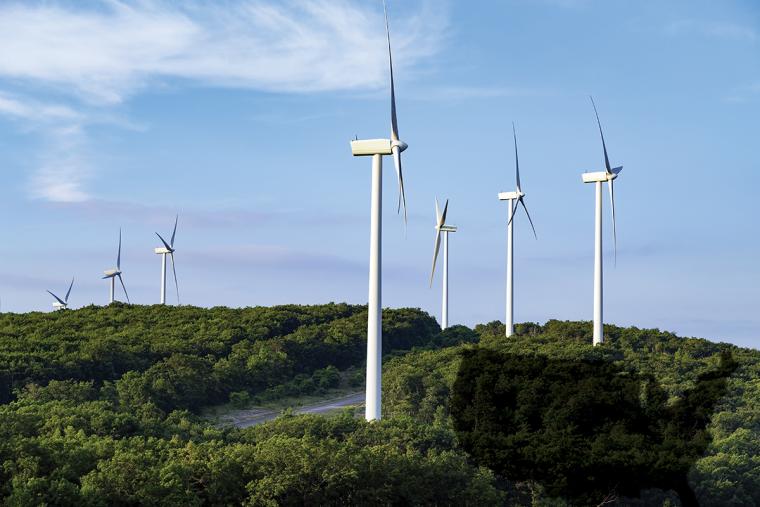

Meanwhile, this increasing generation from renewable sources is being utilized in direct collaboration with the drive for more efficient buildings and green transportation.
For state and local leaders in the United States, economic development prospects are being placed squarely, and being realized, on the growth of renewables. According to the National Conference of State Legislatures (NCSL), renewable energy in the United States drives a market of $44 billion. All of this investment is occurring despite the economic challenges and policy contests being presented by the sector.
The Renewable Sector – Overcoming Challenges
Few can argue against the great potential renewable energy plays in the future of powering the world and providing for a cleaner future. However, the thought by many was without certain policy mandates, economic sacrifices and public subsidies, a significant impact to our fossil-fuel driven economy from renewables would bedecades, if not generations, away from being realized.

Impact of Oil
In recent years, many of these factors have either reversed or have been eliminated entirely. To begin, oil prices reaching all-time highs of nearly $150 per barrel, according to the West Texas Intermediate (WTI) price in 2008, immediately placed renewable energy sources in a position of relative affordability. Following price uncertainty, in which the world saw a barrel drop to near $30, only to soon return to levels above $100, further pushed renewables as a more reliable alternative to fossil fuel dependencies.
Enter the current reality of oil prices in the global marketplace. Hovering around $50 per barrel, the effects of leveling demand and increased supply, primarily from American shale production, have appeared to tame the uncertain oil markets. Outside of a significant policy change by major oil players, many experts anticipate these current prices to be more of the norm, as opposed to an outlier in a long-term fluctuation of the historic market.
With this significant decrease and relative stabilization of the oil markets, many experts predicted significant setbacks would take place in the renewable industry. A quick shift back to the dependence of a low-cost, reliable fossil fuel market seemed the logical and common-sense direction of the global business community.
As the trends are showing, though, investments in renewable energy continue. While not as high as the previous year, global investments in renewables, excluding large hydropower, were nearly $250 billion. Reasons for the decrease from 2016 are not necessarily linked to the fossil fuel market, but actually due to the decrease in the costs per MW for the technologies. Further, in 2016 record installation of renewable power capacity globally was witnessed, according to a Frankfurt School – UNEP Collaborating Centre for Climate & Sustainable Energy Finance report.
 National Policies
National Policies
Government policies around the world have also led to uncertainties in the renewables market. Primarily, these concerns of late have focused on policies coming from the United States, or lack thereof. Without the establishment of a national renewable portfolio standard (RPS) and the recent exit from the Paris Agreement, a global climate accord, many have had doubts about the success of the renewables sector. Nevertheless, the robust industry has continued full steam ahead.
Over the past decade, the U.S. Congress has debated numerous proposals to institute an RPS at the federal level mandating that certain levels of U.S. electrical generation must come from non-hydro renewables, which is also often referred to as a renewable electricity standard (RES). Despite going as far as committee approval, an RES has never been passed into law. Instead, the states and cities have taken on their own standards (discussed in more detail later in this article).
China, a competitive force in the global economy, has set targets for renewable energies. By 2030, the Chinese government has set targets to see 20 percent of the country’s power supply to be from non-fossil sources. Meeting these goals will certainly be a challenge of major proportions. However, the signs are positive coming from the nation as, according to a recent BP “Statistical Review of World Energy” report, China is now the top producer of renewable energy in the world. Approximately 40 percent of global growth in the industry is linked to China, which accounts for more than the entire Organisation for Economic Co-operation and Development (OECD) membership combined.
America’s exit from the Paris Agreement has led many experts to be concerned with the future of renewables in the United States. Nevertheless, countless business leaders and financial institutions have continued their commitment to renewables – whether connected to global climate policies or not. One organization of these leaders is known as RE100, which features more than 100 of the world’s most influential companies making a pledge to go ‘100 percent renewable.’ Targets vary across the businesses, but they all share the same commitment to completely eliminate their utilization of fossil fuels.

As already mentioned, there are a number of states and cities that have developed their own policies to directly support renewables in their jurisdictions. Goals for developing these initiatives not only target significant reductions in their respective dependencies on fossil fuels, but also seek the extensive potential for economic development within communities. Among many initiatives, these policies include RES commitments and economic development incentives.
Across the United States, renewable energy has been a major economic development driver for states and local communities. Through pro-renewable energy policies, states like Iowa have seen significant economic impact from the sector. According to the Wind Energy Foundation, in collaboration with the American Wind Energy Association, the wind industry has led to the creation of more than 6,000 direct jobs for the Hawkeye State, including manufacturing, construction and operations and maintenance jobs. Further, the industry accounts for at least $11.8 billion in capital investments in Iowa, including $17 million in annual lease payments for hosting wind turbines on community lands.
This growth in the state’s industry can be tied directly to the policies, including requirements for renewable energy production across the state’s utilities. According to the NCSL, 29 states, Washington, D.C., and three territories have adopted an RPS. An additional eight states have set renewable energy goals. The Hawkeye State was the first to adopt an RPS, which dates back to 1983. Hawaii carries the nation’s most aggressive RPS requirements.
The RPS policies across the nation vary in the target levels and mechanisms. For example, Iowa requires a set level of energy capacity that must be delivered by renewables. Their northern neighbor, Minnesota, requires a percentage of the total power portfolio to come from renewables. By 2025, investor-owned utilities must have 26.5 percent of their portfolio from renewables, while other utilities must meet a 25 percent threshold. Major utility, Xcel Energy, has an even further requirement to have renewables comprise 31.5 percent of its state portfolio by 2020.
States aren’t the only ones implementing RPS commitments in the United States. City governments have also taken on the pledge to transition to 100 percent renewable energy. More than two dozen municipalities have made the comprehensive commitment.
 The city of Madison, Wisconsin, became one of the most recent communities to make the commitment to 100 percent renewables. Earlier this year, the Madison City Council approved a resolution to move the city toward a renewables-only status. According to the The Cap Times, the city budget already included $750,000 for sustainability improvements, including the installation of renewable energy systems. The recent resolution allocated an additional $250,000 to develop a plan to meet the 100 percent renewable targets. Madison is the first city in the Badger State to make the commitment.
The city of Madison, Wisconsin, became one of the most recent communities to make the commitment to 100 percent renewables. Earlier this year, the Madison City Council approved a resolution to move the city toward a renewables-only status. According to the The Cap Times, the city budget already included $750,000 for sustainability improvements, including the installation of renewable energy systems. The recent resolution allocated an additional $250,000 to develop a plan to meet the 100 percent renewable targets. Madison is the first city in the Badger State to make the commitment.
Financial Backing
Dating back to the early 20th century, government policies have directly supported funding energy development in the United States. More recently, much of this investment at the federal level was driven by the American Recovery and Reinvestment Act of 2009 (ARRA), which many refer to as the Stimulus law. At the state and local levels, economic development incentives are leveraged through a variety of mechanisms to support the industry.
As the funding provided through the ARRA legislation did spur investments in renewables, several of the programs have since been reduced or eliminated. However, there are still opportunities for investors to leverage federal dollars and capture tax credits for renewable energy investments.
Established by the Energy Policy Act of 2005, the federal government provides tax credits for investments in residential renewable energy property. After several revisions since inception, the program today allows for tax credits to be captured for up to 30 percent of the investment for certain technologies. While initially allowing for investments in wind power and fuel cell technologies, the program is currently limited to solar-electric and solar water-heating systems, according to the Department of Energy.
For investments in renewable energy in rural America, the United States Department of Agriculture (USDA) has tools to support the industry. One of these tools is through the Rural Energy for America Program (REAP). Authorized through the Farm Bill, REAP can provide guaranteed loan financing and grant funding to agricultural producers and rural small businesses for renewable energy investments. Capped at $500,000 per project, grants can be leveraged for the investment in eligible systems, including biomass, anaerobic digesters, small hydropower, wind power and solar generation, among others.

One common mechanism utilized by the state and local governments to encourage renewable energy development is the exemption and/or abatement of property taxes. Thirty-eight American states now offer property tax exemptions for renewable energy developments, according to the Solar Energy Industries Association (SEIA), a national trade association promoting the U.S. solar industry.
Traditional economic development incentives are also being leveraged to support the renewable energy industry. Often being significant capital investments with job creation, renewable energy investments may qualify for traditional programs, as these projects meet the key tenets of core economic development missions. Complex incentives, such as Tax Increment Financing (TIF), may also be utilized in certain circumstances for renewable energy investments.
Conclusion
Even though the renewable energy sector has faced numerous policy hurdles and economic challenges, the industry has continued to power forward. Accounting for nearly one in 10 MW produced in the globe today, the renewable energy sector is generating power in every corner of the world. With major investments in China and in the United States, this growth is only expected to continue full steam ahead.
For American leaders at the state and local levels, the economic development opportunities driven by renewable energy continues to drive support for the industry. Investors can expect many of the policies and programs to endure going forward as the country develops as the United States of Renewables. T&ID

